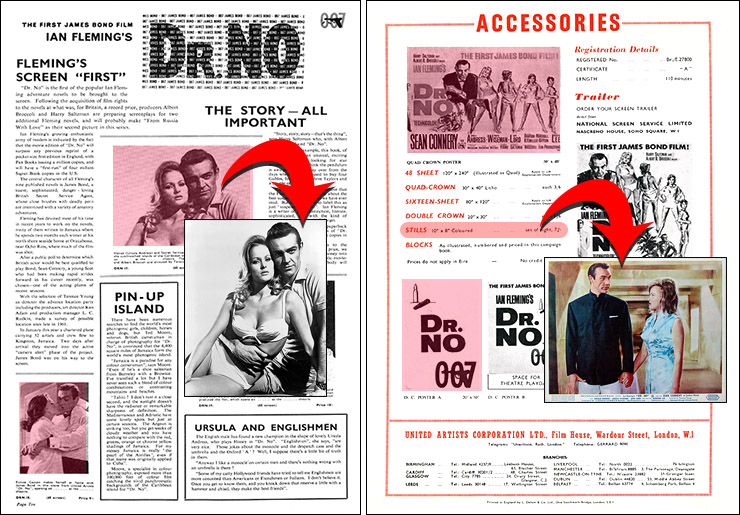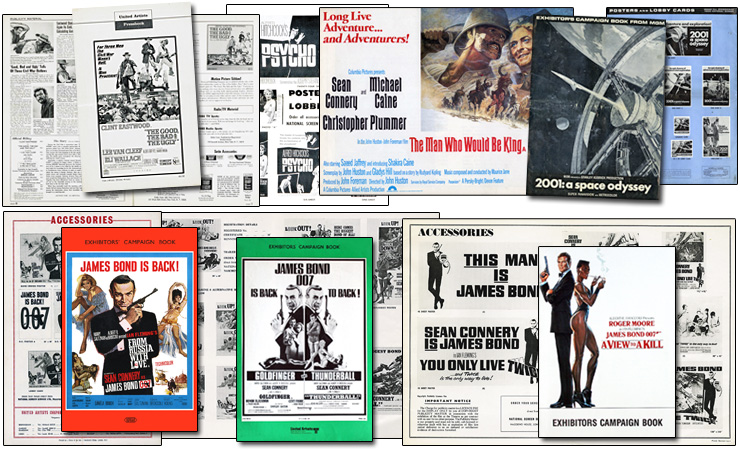|
Exhibitors’
Campaign Books
Exhibitors’ Campaign Books have been around as long as there have been
movies, and feature an eclectic mix of elements helping to promote a
film. Mainly supplied to cinema managers (but sometimes also the
national and local press) these publications in their standardised
format e.g. for films released by United Artists in the Sixties, like
the Bond series, would usually contain 12 pages, although the page
count and page size of other film distributors’ campaign books could
differ. The Bond
campaign books were mostly laid out in a portrait
format, although this style was broken with Thunderball (1965),
You Only Live Twice (1967), and On Her Majesty’s Secret
Service (1969), until returning to the portrait format again with
Diamonds Are Forever (1971). In the United States these
publications were called
Pressbooks and were completely different in
content to their UK counterpart. Pressbooks were also produced for
other territories around the world, but these, although interesting,
were seldom as lavish in production as their UK and US counterparts.
All the James Bond films from Dr. No (1962) to Licence To
Kill (1989) had Exhibitors’ Campaign Books produced to accompany
the release of each film. By the time Agent 007 returned to UK cinema
screens after a six-year hiatus in 1995 with GoldenEye, the
Exhibitors’ Campaign Book had been discontinued, replaced by Spirex-bound
marketing manuals and electronic press kits on VHS videocassette, and
eventually CD-Rom, and DVD, but were discontinued after The World
is Not Enough (1999). Die Another Day (2002) had its Press
Kit issued as a CD-ROM with printed production notes.
A printed full-colour landscape format Marketing Guide was produced
for Casino Royale (2006).
Not surprisingly, in the collectors’ world these publications
have become highly sought-after and can be an expensive addition
to a Bond enthusiast’s collection |


